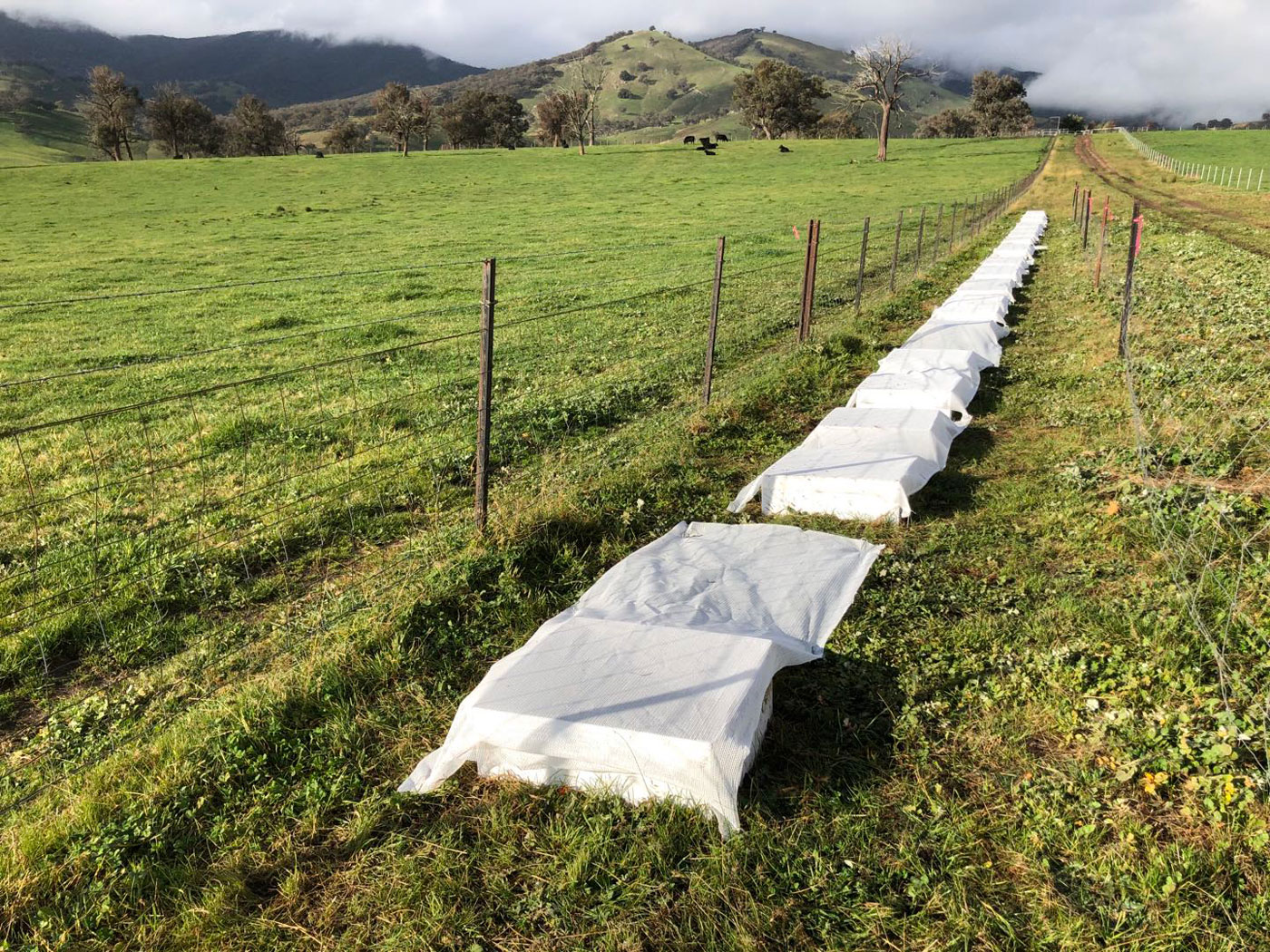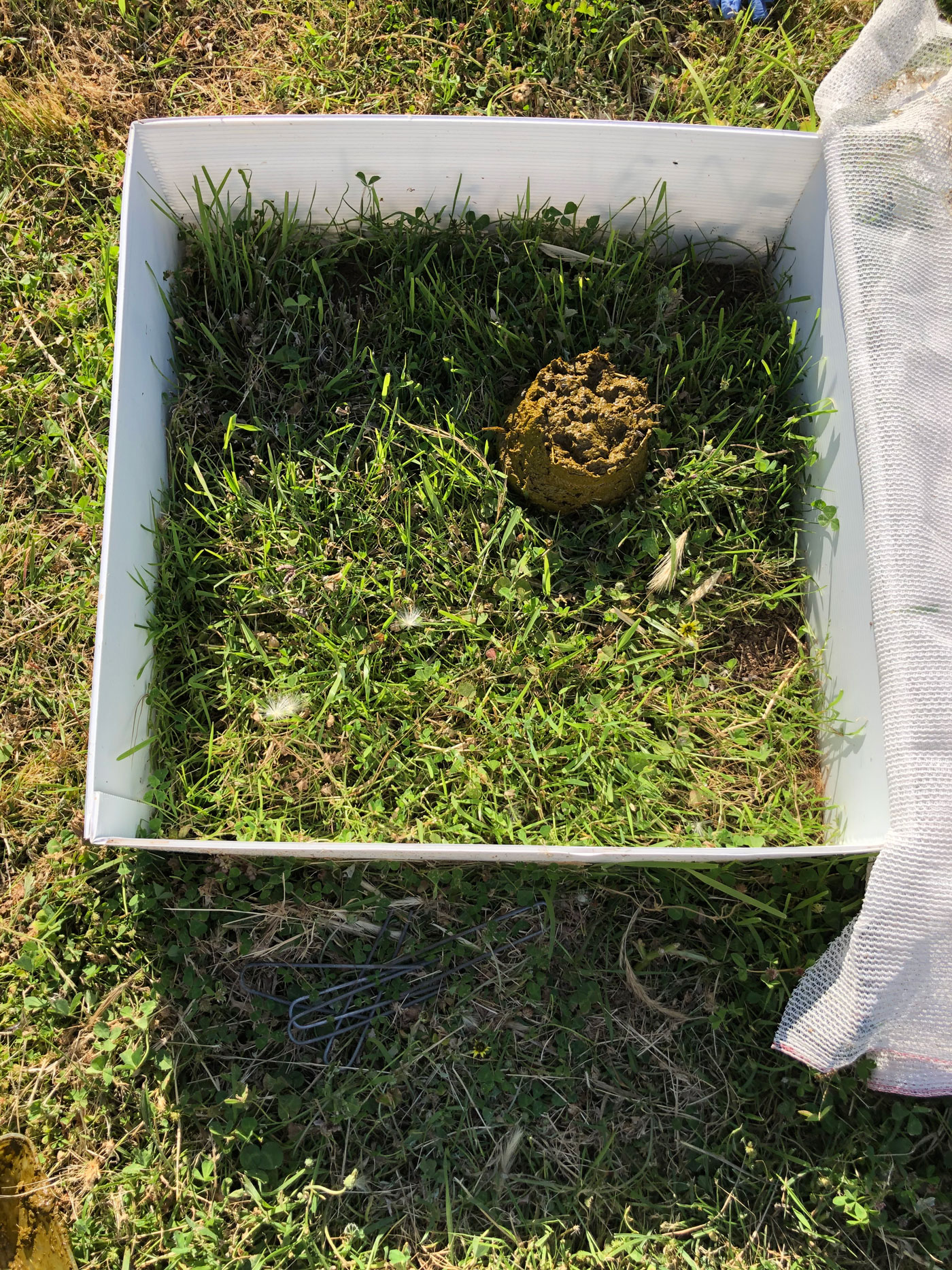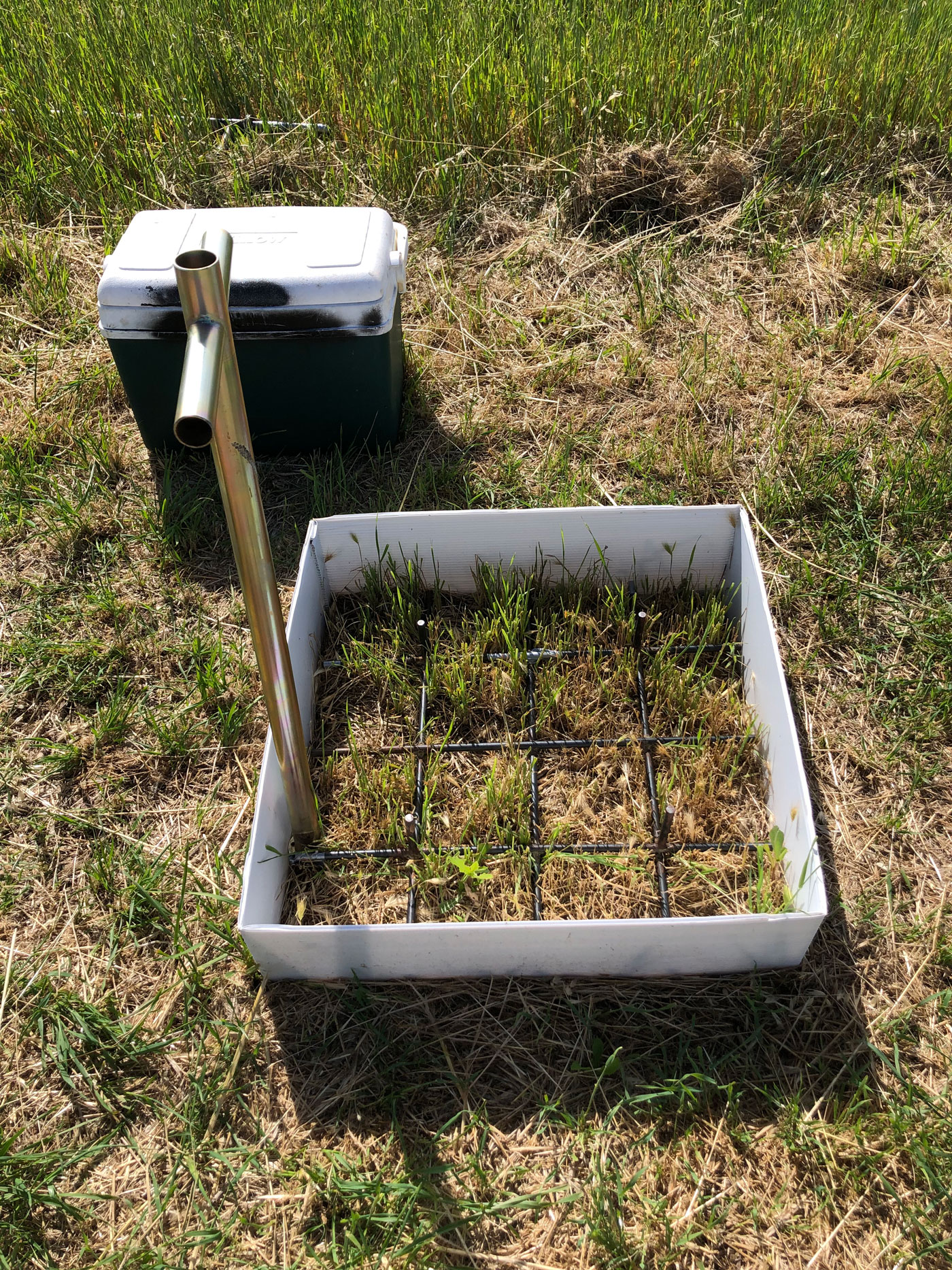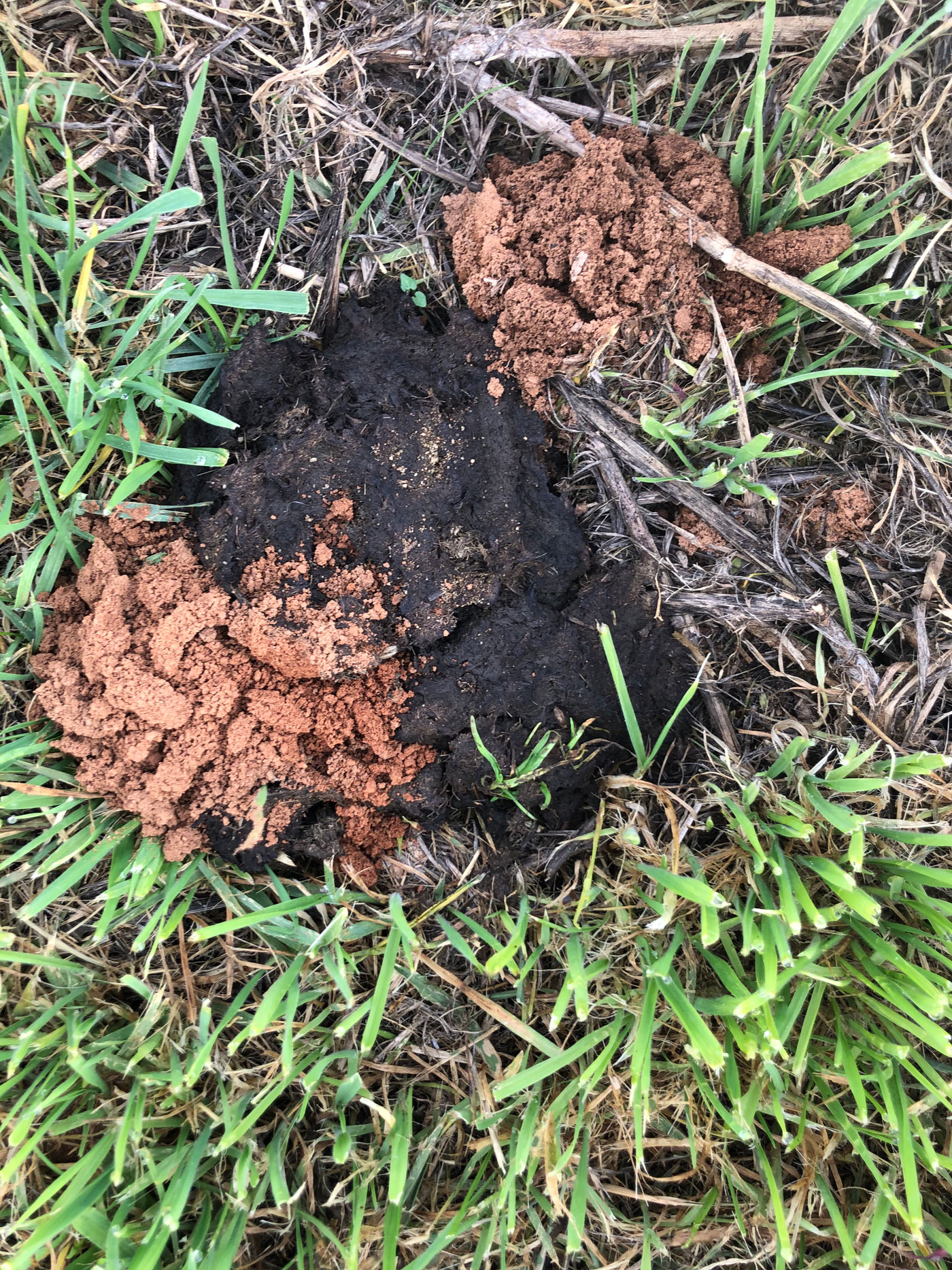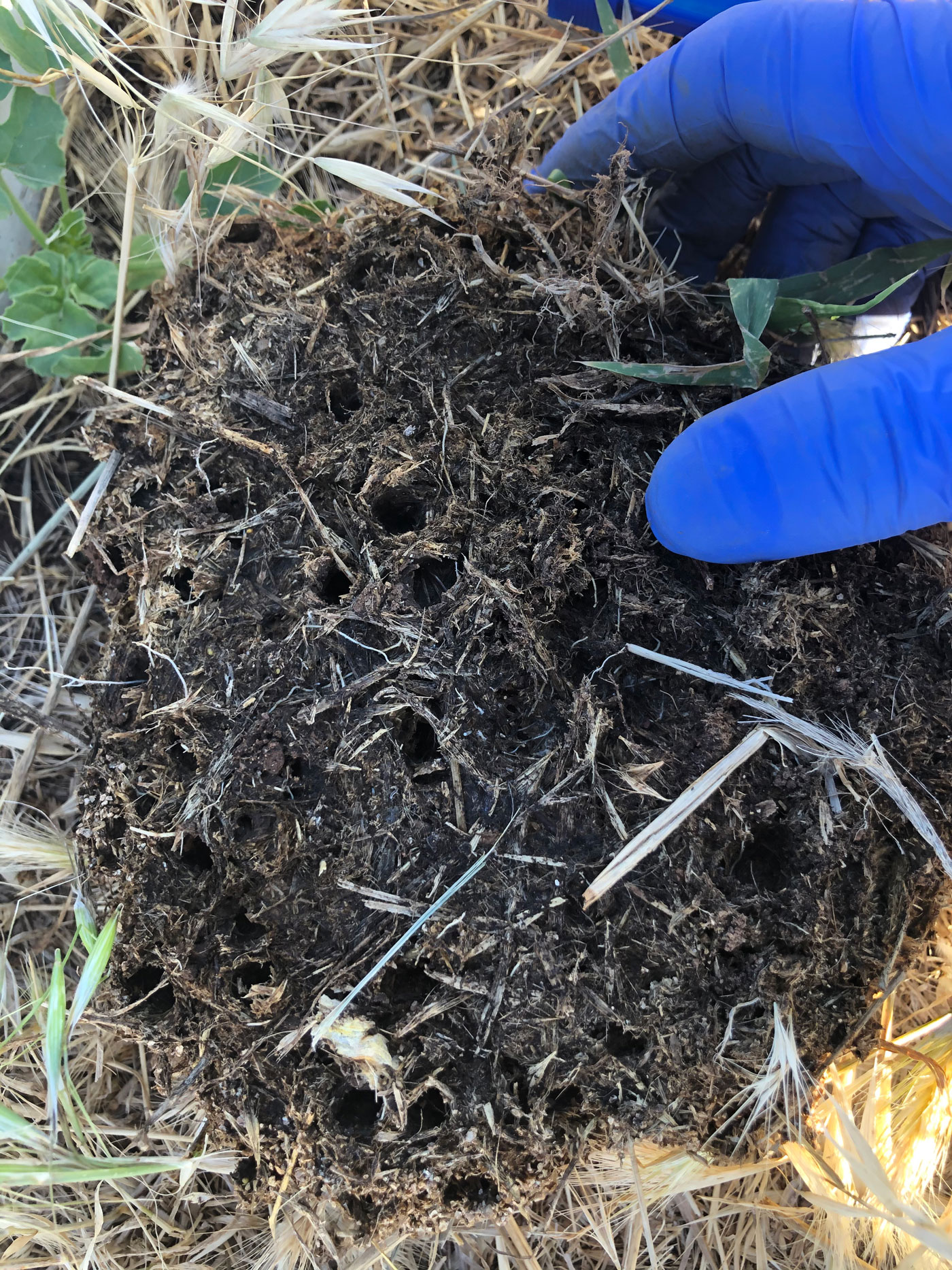Field experiments at three central NSW locations to study dung beetle ecosystem services by Long Ma, CSU.
As part of my PhD research in soil biology and ecology at Charles Sturt University, field mesocosm experiments were undertaken at three diverse locations with grazing beef cattle in central NSW. Sites included the CSU farm in Wagga Wagga, Kimo estate in Gundaga and Rennylea Angus farm in Bowna. Research commenced at all three sites in July 2020 to evaluate the effect of dung beetles on dung decomposition, pasture growth, soil nutrient availability and soil microbial activity over a 12-month period. Two species of dung beetles, Bubas bison and Onthophagus vacca, were used as model species and were introduced to the experimental sites during their corresponding active seasons. Results to date show significant differential impacts of beetle species upon dung decomposition with B. bison a more effective processor of dung. In addition, the presence of B. bison plus dung resulted in greater pasture growth in all locations. Further details will be presented in the Soil Science Australia and the New Zealand Society of Soil Science Joint Conference, in association with ASPAC in Cairns this June 2021. A conference proceedings paper on the subject will soon be published as well.
